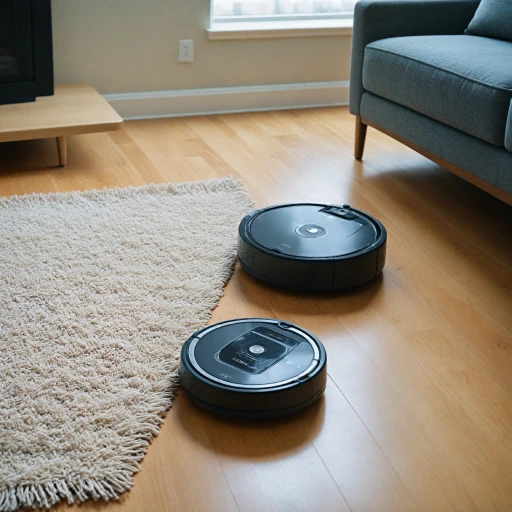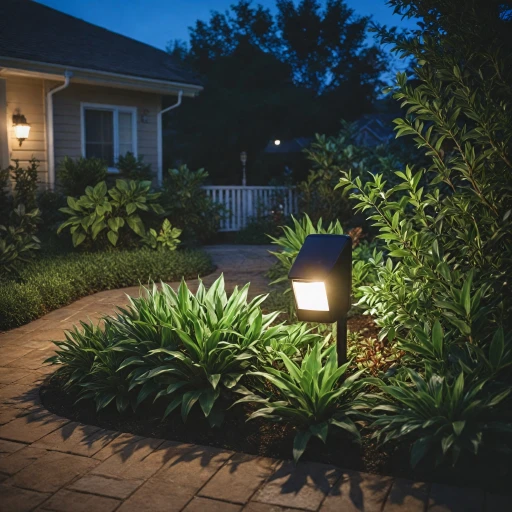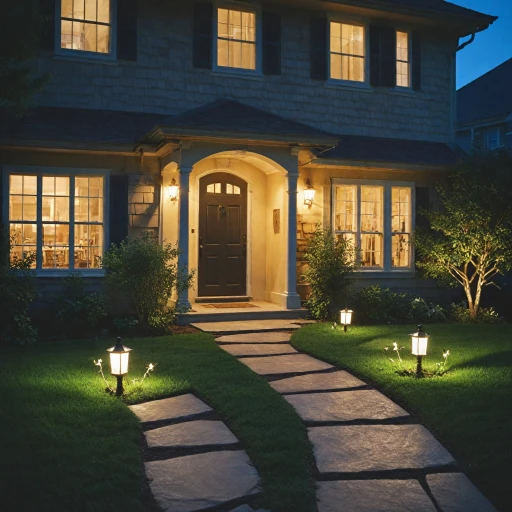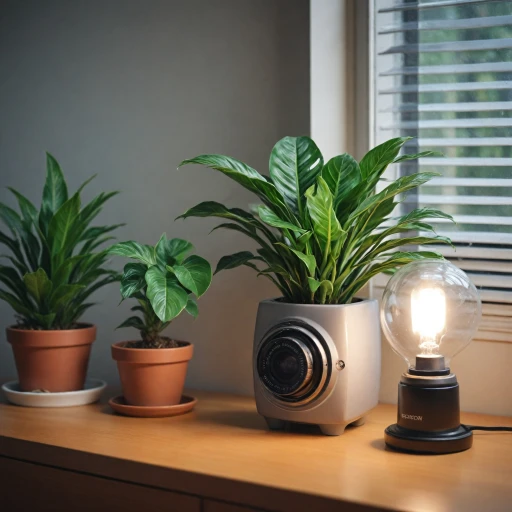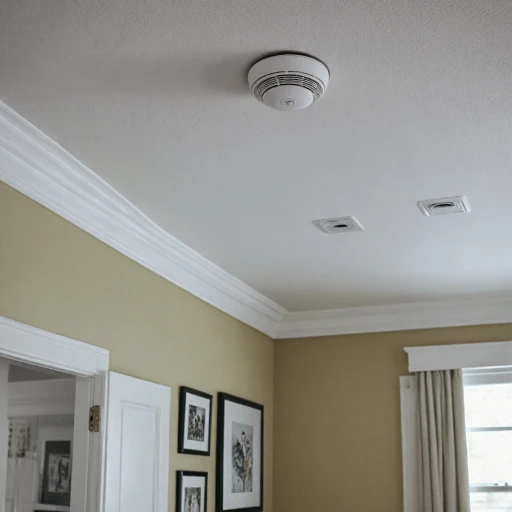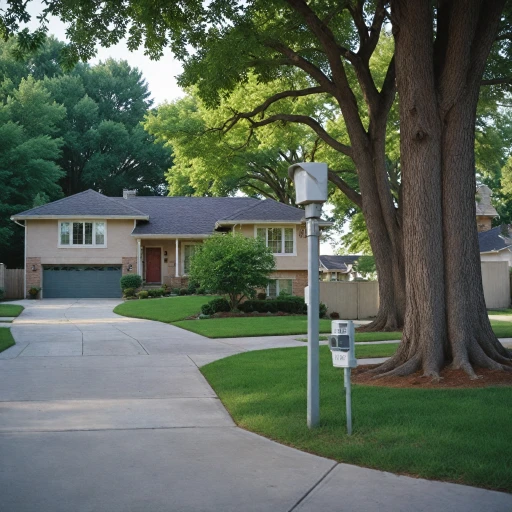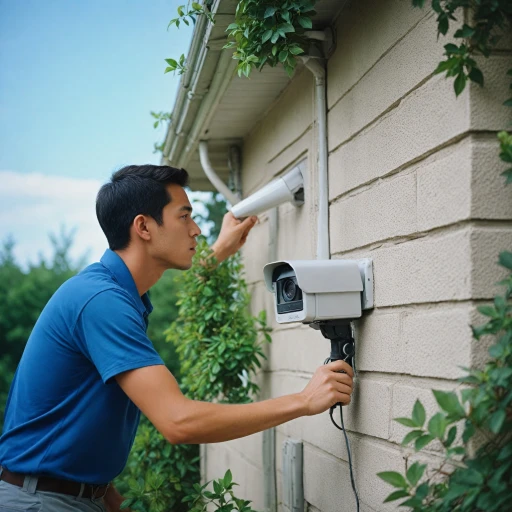
Understanding the Role of Outdoor Motion Detectors
Importance of Motion Sensors in Home Security
Understanding the vital role of outdoor motion detectors in enhancing your home’s security system is paramount. Outdoor motion sensors are designed to detect movement around your home and trigger an alert to make you aware of any potential intrusions. Their significance cannot be overstated, as they provide a critical first line of defense for your property.- Recognizing Movement: At the core, a motion sensor identifies changes in its view, primarily sensing motion within its detection range. Whether it operates as a PIR (Passive Infrared) sensor or an active ultrasonic detector, its ability to discern these variations is essential for effective alarm management.
- Range and Coverage: Different sensors have varying long-range capabilities, suitable for securing large perimeters or driveways. Their positioning affects their efficiency, ensuring they provide optimal coverage where most needed.
- Alarm Activation: Coupled with systems like a driveway alarm or battery-powered wireless security frameworks, motion detectors can activate alarms that alert you promptly, keeping false alarms to a minimum through dual detector systems.
Key Features to Look for in Outdoor Motion Detectors
Essential Aspects to Consider
When shopping for outdoor motion detectors, it is crucial to focus on several key features that enhance functionality and ensure reliable performance in your security setup. Here are some important elements to look out for:
- Motion Detection Range: Assess the sensor's range, which can vary from a few feet to several hundred meters. Consider the distance you need to cover in areas like your driveway or backyard.
- Sensor Types: Outdoor motion detectors typically come as passive infrared (PIR) sensors or dual technology sensors that couple PIR with microwave or ultrasonic detection. Dual sensors help reduce false alarms by confirming movements with two technologies.
- Wireless Features: Opt for wireless models to simplify installation. Look for systems with reliable wireless perimeters that maintain connectivity without interference.
- Power Options: Evaluate if battery-powered PIR configurations suit your needs, or if a wired solution is preferable. Battery-powered models offer flexibility, while powered wireless options may provide consistent performance.
- Weather Resistance: Consider weather-proof and water-resistant capabilities for durable outdoor use.
- Adjustable Sensitivity: A motion sensor with adjustable sensitivity levels allows customization to manage high or low detection settings, reducing false alarms from small animals or blowing leaves.
For additional ways to enhance your home's security utilizing motion detector technology, enhancing home security with outdoor motion sensor alarms can be a valuable resource. These insights aim to help you make informed purchasing decisions that contribute effectively to your overall security strategy.
Comparing Different Types of Outdoor Motion Detectors
Different Types of Motion Detection Devices
When it comes to securing your home with outdoor motion detection, understanding the various types of motion detectors available is crucial. From basic sensors to high-tech devices, each type offers its own set of benefits and may cater to different needs, ranging from simple driveway monitoring to advanced perimeter security systems.
Active and Passive Infrared Sensors
Two primary types of detectors used in outdoor settings are active infrared (AIR) and passive infrared (PIR) sensors. Active infrared sensors work by emitting infrared light and detecting the reflection from objects, whereas PIR sensors detect changes in infrared radiation emitted by surrounding objects. Passive infrared detectors are particularly popular in residential settings due to their efficiency in reducing false alarms and their lower power requirements. Using outdoor PIR sensors can cover a wide range of motion activities, offering a versatile security solution for monitoring driveways or yards.
Wireless and Hardwired Solutions
Another distinction among motion detectors is based on their connectivity. Wireless motion detectors are preferred for their ease of installation and flexibility in placement. Many wireless detectors operate on battery power, offering a solution in areas where running electrical wiring might be difficult. Importantly, advanced wireless systems often come with long-range capabilities, ensuring effective sensor detection over larger areas. For those opting for powered wireless setups, battery-powered motion detectors offer reliable performance without the hassle of wiring.
Choosing Multi-Technology Detectors
For enhanced security, consider dual-technology motion detectors. These combine technologies like PIR with microwave sensors, improving accuracy and further minimizing the chance of false alarms. Dual-sensor technology not only caters to high-security needs but also excels in challenging environments where traditional sensors might fail.
Range and Sensitivity Adjustments
The detection range and sensitivity of motion sensors can significantly impact your security system. While some detectors offer the flexibility to adjust the range and sensitivity settings to cater to high and low-risk areas, others may come with fixed configurations. Opt for systems that allow for adjustment as it ensures optimal performance tailored to your specific security needs, whether it's monitoring a secluded driveway or a bustling garden.
Exploring these different types of motion detectors will help you make an informed choice and effectively integrate them with a comprehensive security system, possibly enhancing your home's security.
Installation Tips for Outdoor Motion Detectors
Smart Installation Tips for Optimal Performance
Proper installation is crucial for maximizing the performance and effectiveness of your outdoor motion detectors, ensuring your home security system functions smoothly. Follow these essential tips to set up your sensors and detectors successfully:- Choose the Perfect Location: Select an area with high traffic where you want to monitor activities, like the driveway or backyard. Make sure the location offers a wide view for the motion sensor to cover its full detection range.
- Adjust for High and Low Temperature Sensitivity: Position the motion detector sensor where it is sheltered from extreme temperatures to reduce false alarms. Outdoor PIR sensors should be placed avoiding direct sunlight and heat sources.
- Consider the Power Source: Whether you are using a battery-powered PIR sensor or a powered wireless detector, ensure the power supply is stable and consistent. Regularly check battery levels to maintain uninterrupted operation.
- Optimize Detection Angle and Range: Position sensors at a height between 6-8 feet, angling them slightly downward to maximize the sensor detection. Consider dual sensors for extended range to cover more ground.
- Securely Mount Sensors: Utilize the mounting accessories included in the spec sheet to fasten the sensors securely. Poor installation may compromise the system's integrity and lead to malfunction or vandalism.
- Reduce False Alarms: Place motion detectors away from objects causing constant motion, such as tree branches. Use outdoor dual technology detectors for enhanced reliability in challenging environments.
- Ensure Wireless Connectivity: For wireless perimeter systems, verify that the connection between the sensor and the central system is strong and consistent to prevent lapses in security.
- Integrate Additional Features: Consider adding extra features like a driveway alarm or lights that activate alongside your motion detector to provide a comprehensive security solution.
Integrating Outdoor Motion Detectors with Home Security Cameras
Pairing Motion Detectors with Home Security Cameras
Integrating outdoor motion detectors with home security cameras can significantly boost the effectiveness of your home security system. By connecting these devices, you can create a comprehensive security setup that combines the sensor detection capabilities of motion detectors with the visual monitoring provided by cameras. Here's how to make the most of this integration:- Enhance Detection Accuracy: Motion detectors, particularly those using PIR (passive infrared) technology, can minimize false alarms by detecting changes in heat sources, reducing high low inconsistencies. When paired with security cameras, these sensors ensure that every detected motion is recorded, providing high-quality evidence if needed.
- Strategic Placement for Optimal Coverage: Consider your driveway, backyard, and other vulnerable areas. Placing motion sensors in high traffic zones where the detection range overlaps with your camera's field of view can cover potential blind spots and ensure comprehensive surveillance. For areas like driveways, a combination of motion sensors and driveway alarms can further enhance security.
- Customize Notification Preferences: Integrating these components allows you to fine-tune notification settings, such as sending alerts only when both motion sensors and cameras detect movement. This dual verification system prevents unnecessary notifications, allowing you to focus on genuine threats.
- Wireless Integration: Consider choosing battery powered or wireless perimeter systems to avoid the hassle of extensive wiring. Options like wireless motion sensors can easily be integrated with IP security cameras, providing seamless motion detection and coverage.
- Smart Home Compatibility: Modern systems can integrate seamlessly with smart home ecosystems, offering enhanced control through apps. This setup allows you to remotely access live camera feeds and manage sensor settings, ensuring peace of mind even when you're away from home.
- Regular Updates and Maintenance: As noted in earlier sections, maintaining and periodically updating your systems is crucial. Regularly check for software updates in both camera and motion detection systems, ensuring compatibility and improved security protocols.
Maintaining and Troubleshooting Outdoor Motion Detectors
Routine Checks and Maintenance
Regular maintenance of your outdoor motion detectors is crucial to ensure they function effectively. Begin by checking the battery powered units regularly. A low battery can lead to false alarms or failure in detection. It's advisable to replace batteries every six months or as recommended in the spec sheet of your motion sensors.
Cleaning and Environmental Factors
Outdoor elements like dust, rain, and snow can affect the performance of your outdoor dual motion detectors. Clean the lenses of your PIR sensors with a soft cloth to maintain clear detection. Additionally, ensure that no objects obstruct the sensor's view, as this can reduce the range of detection.
Troubleshooting Common Issues
If your system is experiencing frequent false alarms, consider adjusting the sensitivity settings. High sensitivity might pick up small movements, like those of animals. On the other hand, if the sensor isn't detecting motion, check for any obstructions and ensure that the sensor is aligned correctly to cover the intended area, such as your driveway or perimeter.
Integration and System Updates
For those who have integrated their outdoor motion detectors with wireless security systems, keeping the software updated is key. Manufacturers often release updates to improve functionality and security, so regularly check for these updates.
Professional Assistance
If you're unable to resolve issues on your own, consider seeking professional assistance. Many providers offer free shipping for replacement parts and have customer service teams ready to help troubleshoot your system. This can be particularly useful for long range or dual sensor setups that might require more specialized knowledge.


